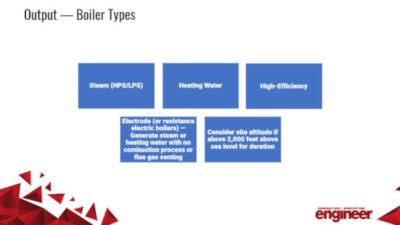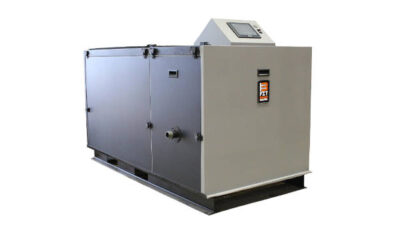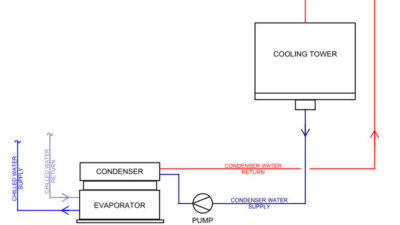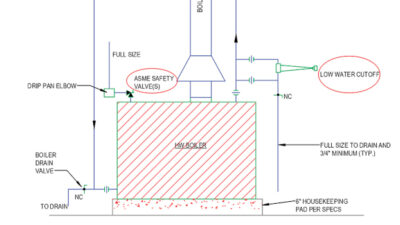The new proposed Department of Energy standard will drive changes on how engineers design air systems for peak fan efficiency.

Fans consume 18% of the electricity purchased by industrial and commercial buildings (Figure 1). Yet fan efficiency has escaped the attention of those who endeavor to design efficient air systems.
That is about to change. Fan efficiency has been regulated in Europe since 2013, and the U.S. Department of Energy (DOE) will publish a proposed rule this year covering fans from 1 to 200 hp. The DOE rule is expected to save approximately 7 quadrillion Btus of energy over 60 years. (Note, the U.S. consumes around 100 quadrillion Btus of energy every year.)
If you follow ASHRAE Standard 90.1: Energy Standard for Buildings Except Low-Rise Residential Buildings or model energy codes, you may have discovered requirements for fan efficiency based on the metric called the fan efficiency grade (FEG), which is tied to the fan’s peak efficiency. In Europe, a similar metric, called the "fan motor efficiency grade" (FMEG), is similar to FEG. Unfortunately, both FEG and FMEG do not lower a fan’s energy use because the fan’s performance, at its peak efficiency, is poorly correlated with the fan efficiency and power use at its design operating point.
DOE’s proposed standard
The operating efficiency of every fan varies dramatically from single digits to peak-efficiency levels that are more than 90%. Unfortunately, a fan with a 90% peak efficiency will generally operate at a much lower efficiency; how low depends on where the fan is selected. Consequently, fan manufacturers rejected the FEG and FMEG peak-based metrics and recommended what DOE now calls the "fan energy index" (FEI). The proposed DOE standard will establish a maximum power input that will vary by a formula tied to the design-point flow and pressure. (See DOE’s website for details.)
FEI is the ratio of the DOE standard’s maximum allowable watts into the fan motor over the actual fan electrical power at the design point. An FEI of 1.0 or greater meets the proposed DOE standard. An FEI of 1.1 will use 10% less energy than the DOE standard. FEI informs the public immediately of the percentage savings relative to a fixed benchmark of DOE regulation—at design conditions. Plotting a fan’s compliant operating range (Figure 2), where the FEI is greater than 1.0, inspires several observations that impact design practice:
- Every fan has a compliant range. The proposed DOE standard will not arbitrarily force any fan off the market. Instead, the proposed standard will limit fan sales to a compliant efficiency range.
- Every fan also has a noncompliant range. This means manufacturers are rewarded for improving the efficiency of every fan that is sold to expand the fan’s compliant range.
- A noncompliant selection is resolved with a larger-diameter fan, or smaller one that is more aerodynamic. Competitive dynamics in the fan industry will shift, as designers consider DOE compliance along with other system requirements.
- The proposed DOE standard covers fan systems, including the motor, transmission, and variable speed drive. Improving these non-fan component efficiencies will expand the fan’s compliance envelope, making it possible to satisfy DOE requirements with a smaller-diameter fan.
- Building owners are more likely to compare actual design conditions (and actual FEI) recorded during commissioning with those specified. Clients will have a clear expectation of the power use of the fan, thanks to the DOE regulation and the FEI metric. Getting the air-system design right will become equally important.
There is much to understand in this new DOE rulemaking, and many implications to engineers’ design practice that will lower fan energy use.
Wade W. Smith led the DOE’s rulemaking negotiations for the fan industry. He now consults on related questions with HVAC manufacturers and component suppliers.



